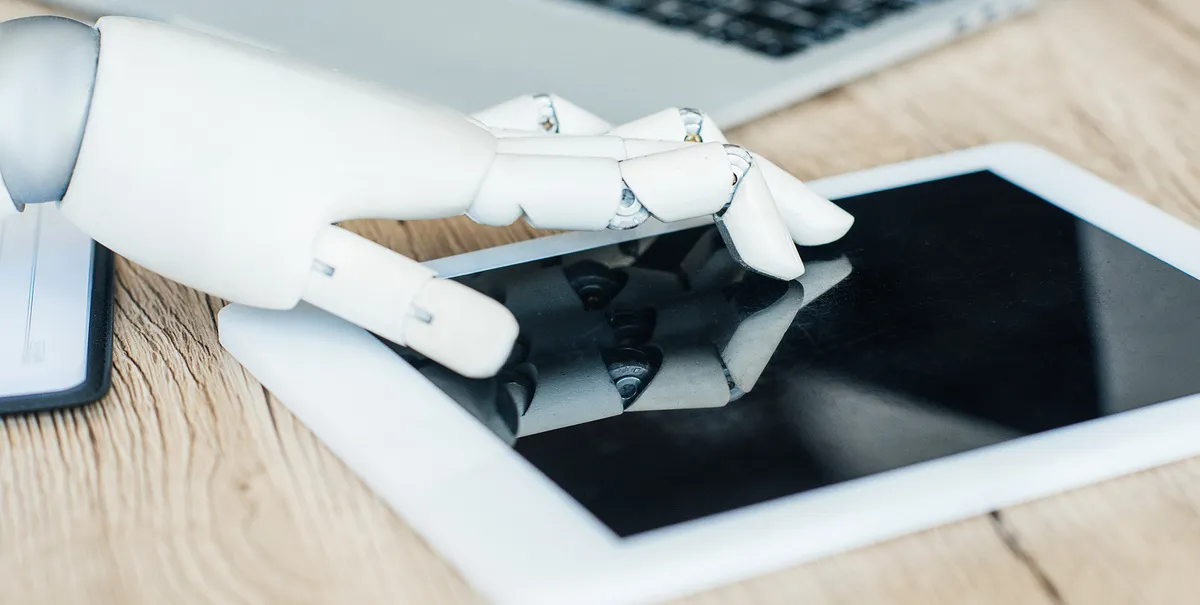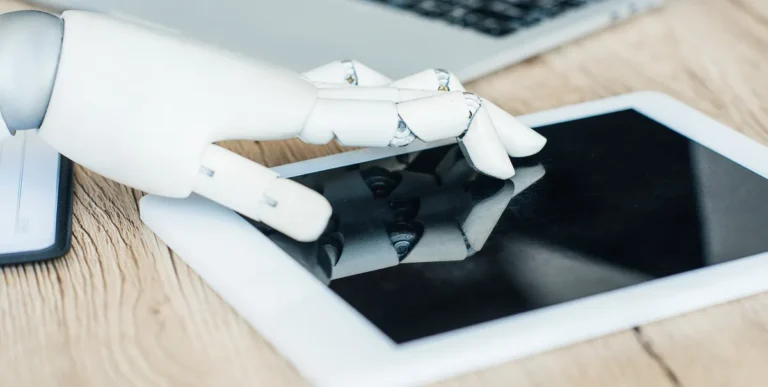Artificial intelligence is fast becoming the cornerstone of personalized marketing, but what piece is it in the puzzle of modern marketing efforts?
Quite a big piece, as it turns out. AI has a hand in the creativity, accuracy and timeliness of marketing campaigns in all kinds of industries. From using AI to better organize customer data to launching buyer-facing features built on generative AI models like GPT-4o, there are many ways AI fits into the world of marketing and personalization.
Here’s your guide to understanding how AI and marketing personalization mesh — and how it helps you boost your bottom line. In this post, we’ll both cover what AI can do to make your marketing job easier (and get better results) and where there are limitations to take into account.
3 Ways AI Fits Into Personalized Marketing
If adding personalization to your marketing is a priority for you (and it should be), AI can help. Here are the tools and strategies worth trying. As with any marketing strategy, test to see what works best for your goals and audience.
1. Generative AI Talks To — And With — Customers
Generative AI is more than just a disembodied voice. Professionals on marketing teams can use gen AI models to build a foundation of personalized, high-quality content for campaigns. By leveraging advanced large language models, you can create compelling copy that’s tailored to specific target audiences.
From crafting engaging email newsletters and social media posts to creating customized product descriptions and advertisements, the options are endless. Naturally, keeping highly trained humans on board to act as a pilot for a fast-moving content train is key.
Now let’s take things beyond content creation.
In addition to helping you talk to your customers, gen AI can also provide a space to talk with them.
AI-powered chatbots on websites can simulate human-like messaging, providing real-time, highly personalized responses to customer inquiries. These chatbots can handle a wide range of tasks, from answering frequently asked questions to guiding users through the purchasing process — or even taking requested action on their behalf, like upleveling subscriptions.
This level of instant assistance can significantly enhance customer engagement and personalized experiences.
2. AI Helps You Better Understand Your Audience
Question: Are marketing strategies consistent across demographics or between customers at different stages of the customer journey?
Here’s the answer — no. And that’s exactly why data analytics is so helpful in personalized marketing.
Generative AI can organize and analyze data on customer interactions and preferences, ensuring that the content not only attracts attention but also drives conversions by addressing each segment’s unique wants and needs.
Naturally, data security and privacy is a key concern when it comes to using AI for data analytics. Read on to hear what we have to say about responsible AI use in personalized marketing.
3. AI-Enabled Content Meets Customers Where They’re At
Content is more than just words.
It’s also what you see and hear, hence the popularity of multimedia content (take note — 83% of people say they want more video content from brands).
AI can help with this, too.
Well-equipped marketing professionals use AI to create video content that’s personalized for the individual. The AI video can address each customer by name and even connect with your CRM to personalize every scene in the video at scale. Need millions of videos, one for each customer? No problem.
The great thing about using AI for video production is that it can handle every step of the process if you don’t have a marketing agency or an animator on staff. AI can do the scripting, storyboarding, voiceover, animation, you name it.
It’s also worth mentioning that marketing is more than getting new customers. It’s also about nurturing current customers. That includes cutting churn, cross-selling where relevant and promoting referrals and recommendations.
This is why AI-driven marketing campaigns are helpful at touchpoints throughout the customer journey. For example, you might share an AI video in a personalized email to your customers to boost engagement and, long term, to increase loyalty.
5 Personalization Examples for AI Inspiration
Not every marketing campaign is a winner (remember when Pepsi thought Kendall Jenner could basically achieve civil rights with a can of soda in 2017?). In the same vein, not every AI-enabled marketing campaign is going to be a winner (if you saw the heat Toys “R” Us got from its 2024 commercial, created almost entirely from OpenAI’s Sora tool, you’d understand).
But many of them are, and that’s what we’re focusing on here. Below are five great marketing campaigns, all uplifted by AI with varying use cases.
1. Personalized Email Marketing
Mastercard’s Dynamic Yield software enables businesses to target specific customer segments and spark desired customer behaviors via a highly intelligent algorithm.
Dynamic content blocks in the drag-and-drop email builder allow marketing teams to speak to specific audience categories in a process that includes both AI intelligence and automation. One such way is via product recommendations. Expose the user to more products through your choice of algorithm (for example, popularity, purchased together or similar products).
There’s also a machine learning algorithm called NextML that operates on predictive matching of the next item a user is most likely to interact with based on patterns of similar users in the past.
This optimization of the email marketing process is a great example of how AI can personalize marketing without taking away your team’s creative control.
2. Interactive Video
We’ve already talked about how valuable video is in the marketing mix. But what happens when you take it up a notch?
Any video can be made interactive for an extra layer of personalization. Viewers can guide the story, choosing the next scene or skipping ahead. They can shop for products and services directly through videos. Interactive Video is a highway to deep viewer interactions, resulting in better engagement and higher conversion rates.
See the example below with CTAs throughout. Then check out our other Interactive Video examples for choose-your-own adventure storytelling and more.
How do you add AI to this process? Let it make the video! Our AI uses a technique called Retrieval-Augmented Generation (RAG), This means it draws only from approved assets and branded materials to create the video content. That way you can be sure it’s accurate (no AI hallucinations) and on brand.
Vodafone’s personalized sales push for the iPhone 14 Pro implements interactivity with an “Upgrade Now” button towards the end of the video. These efforts go beyond customer retention and enter the territory of valuable upselling, ultimately increasing customer lifetime value.
3. AI-Powered Chats
Chatbots aren’t what they used to be — and it’s for the better. Bank of America’s virtual financial assistant, cleverly named Erica, is a solid example of this.
Erica is a mobile banking concierge within the Bank of America app that’s fueled by generative AI and available at all hours. While specialists can hop on the line for particularly complex topics, Erica can manage a lot, like scheduling payments and completing investment transactions on your behalf. It (she?) can also help you find past transactions by simply searching, eliminating the need to tediously sift through statements.
According to Bank of America, “Erica learns from the conversations with you and other Bank of America customers and has a dedicated team that’s continually working to expand the capabilities offered.”
Because Erica is able to take action on behalf of customers, it’s a real marketing tool that can upsell existing users on new products and services. Moreover, it increases customer loyalty because of the ease and convenience that comes with using such a nifty tool.
4. Personalized Sales Videos
It would be great if you could go visit each potential customer in person to introduce yourself and your product or service. But unless you’re selling Girl Scout cookies to neighbors on your street, you’re going to need to find something more scalable.
Enter personalized sales videos made with AI.
The AI does all of the heavy lifting — the script, animation, music selection, call to action and more. Meanwhile, customer data feeds the personalization within the video so you can speak to customers on an individual basis. Want to upload a photo or tweak something that the AI created? Making edits is easy even if you don’t have a video production background.
Pro tip: Did you know you can train AI on your voice? That means your voice can be the narrator for your videos, no sound booth required.
5. AI Advertising
Have you considered using AI for your ad efforts?
In a case study by Neil Patel’s marketing agency, human creatives outperformed AI creatives in developing more successful advertisements 68.3% of the time. But AI creatives were able to create 231% more campaigns than their human counterparts. Together, they found AI could create variations of the successful human-generated campaigns for a more robust output.
This level of scale can also allow for personalization, if you have an ad platform that supports dynamic content.
As Patel says, “a human may be more creative (at least for now), but if you have AI assistance, you will see your performance go up.”
Watch the video below for a summary.
Interested in learning more about AI vs. humans in the world of advertising? AI-powered market intelligence company GfK decided to launch an advertising campaign, in which it set up its own CMO, Gonzalo Garcia Villanueva, against a ChatGPT-powered CMO dubbed Ruby Robot, to see who knew more about marketing. The AI vs. human debate found, as you might expect, that humans and AI are better together. The campaign ended up winning an award for its creativity, grabbing silver in the “Best Use of AI” category at the B2B Marketing Awards in 2023.
In Marketing, Responsible AI Use Is Key
Maybe you remember when DiGiorno Pizza used an inappropriate hashtag in 2014 to advertise their pizza. This trainwreck of a marketing strategy resulted in a quick delete, but it wasn’t fast enough. When they hopped on the #WhyIStayed bandwagon to say “You had pizza,” they didn’t realize they were joining a conversation about domestic violence.
If a human can make the mistake of joining a trending topic without understanding the context, so can a machine.
In Ethan Mollick’s 2024 book “Co-Intelligence: Living and Working with AI,” he cites one of the key principles of using AI for any purpose as “be the human in the loop.”
Post on
By making sure a human — not solely a machine — is the one reviewing content, making marketing decisions and setting up guardrails for AI tool use, you can avoid a lot of headaches down the line. It’s why our Enterprise AI Video tool has an easy edit function so anyone on the marketing team can make changes to the video after it’s created.
AI-powered personalization also comes with the need to consider data privacy and security every step of the way. This is especially true if you’re using AI to organize individual customer preferences, account data and other sensitive information. Having an AI policy in place at your organization is an important step that you can’t ignore.
According to a recent report, 88% of consumers say their favorite brand uses their data in a way that makes them feel comfortable.
To adhere to this, some best practices include:
- Use a private version of a generative AI tool that doesn’t use your data to train a public large language model.
- Update permissions on all internal files to make sure only appropriate employees have access to them.
- Train employees on how to use approved generative AI tools to avoid the use of shadow AI.
It’s important to remember that AI is not a marketing professional on its own. However, it is a helping hand that can streamline an educated marketer’s workflow and allow them to execute a personalization strategy that works.
Can AI Help Create a Personalized CX?
Personalized customer experiences use creativity, relevant data and timely delivery to reach users.
Whether it’s through email marketing, highly tuned recommendation engines, a personalized product or some other method, marketing personalization makes a real difference on ROI. AI just helps you do it more and do it better.
At Idomoo, we understand this, which is why our Next Generation Video Platform has the advancements needed to tackle a new era of video marketing, including corporate-friendly AI technology designed with enterprise customers in mind.
Meet our AI and see how it — and all the humans behind it — can boost your CX while easing the burden on your marketing team.







